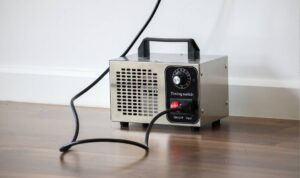Definition of insulation
Insulation is the process of using materials to reduce the transfer of heat or sound between objects or areas, helping to maintain a comfortable and consistent temperature within a space. This can include insulating buildings to retain heat during the winter and keep cool during the summer, as well as insulating pipes and equipment to reduce energy loss and operational costs. Insulation materials can vary widely, from traditional options such as fiberglass and foam to newer, more sustainable options like recycled denim or cellulose. Understanding the different types of insulation and their properties can help individuals and businesses make informed decisions about how to best regulate temperature and energy usage in their environment.
Types of insulation
There are several insulation types materials available, each with their own benefits and drawbacks.
- Fiberglass insulation is one of the most common types. It is relatively low cost and effective at reducing heat transfer. However, it can irritate the skin and respiratory system during installation and may contain formaldehyde.
- Cellulose insulation is made from recycled paper and treated with fire-retardant chemicals. It is eco-friendly and provides good thermal performance, but it can settle over time, reducing its effectiveness.
- Foam insulation, such as spray foam or rigid foam, offers high R-values and can effectively seal gaps and cracks. However, it is more expensive and can release harmful chemicals during installation.
- Mineral wool insulation is made from natural materials like volcanic rock or slag. It is fire-resistant and provides good sound insulation, but it can be itchy to handle.
- Reflective insulation, often used in attics, reflects heat rather than absorbing it. It is lightweight and easy to install, but it is less effective in colder climates.
Environmental considerations for insulation materials include their recyclability, energy consumption during production, and the use of potentially harmful chemicals. It’s important to weigh the benefits and drawbacks of each type of insulation when choosing the right option for a specific project.
Types of Insulation for Exterior Walls
When it comes to insulating a home, exterior walls are a key area to focus on to improve energy efficiency and comfort. There are various types of insulation materials and methods that can be used to effectively insulate exterior walls, each with its own benefits and considerations. In this article, we will explore different types of insulation for exterior walls, including traditional materials like fiberglass and cellulose, as well as newer options like foam board and spray foam. We will discuss the pros and cons of each type of insulation, as well as factors to consider when choosing the best option for your specific home and climate. Whether you’re looking to upgrade the insulation in an existing home or planning a new construction project, understanding the options for insulating exterior walls can help you make informed decisions for a more comfortable and energy-efficient living space.
Spray Foam Insulation
Spray foam insulation offers several benefits, including its high insulation value and ability to prevent air leakage. This can effectively lower energy costs and improve indoor comfort. However, it is an expensive option compared to other insulation materials, and professional installation is required, adding to the overall cost.
There are two types of spray foam insulation: open-cell and closed-cell. Open-cell foam has a lower R-value of around 3.5 per inch, while closed-cell foam has a higher R-value of around 6.5 per inch. This means closed-cell foam provides better insulation in a smaller space.
For those looking to install spray foam insulation on their own, a DIY kit like the “Fomo Products Inc. Handi-Foam E84 Class 1 Spray Foam Kit” is recommended. This kit provides everything needed for the application process and is suitable for small to medium-sized projects. It allows homeowners to take advantage of the benefits of spray foam insulation without the need for professional installation.
In summary, while spray foam insulation offers high insulation value and air leakage prevention, it comes with a higher cost and the need for professional installation. Open-cell and closed-cell foam each have their own R-values, with closed-cell foam providing higher insulation in a smaller space. DIY installation kits like the Handi-Foam E84 Class 1 Spray Foam Kit offer an alternative for those looking to install spray foam insulation themselves.

Fiberglass Insulation
Fiberglass insulation is a popular choice for insulating homes and commercial buildings due to its excellent insulating properties. It is composed of fine glass fibers, usually bound together with a resin to form a flexible, lightweight material.
One of the main advantages of fiberglass insulation is its high resistance to heat transfer, making it an effective insulator for both hot and cold climates. It is also non-combustible and does not absorb moisture, contributing to its durability. However, fiberglass insulation can be irritating to the skin and lungs, so proper protective gear should be worn during installation.
Fiberglass insulation comes in different forms, including batts, blankets, and loose-fill. It is commonly used in walls, attics, and crawl spaces to reduce energy costs and maintain a comfortable indoor temperature. Fiberglass insulation can also be made from recycled materials, such as post-consumer glass, which contributes to its environmental benefits by reducing waste and energy consumption in the manufacturing process. Overall, fiberglass insulation provides a cost-effective and environmentally-friendly solution for improving the energy efficiency of buildings.
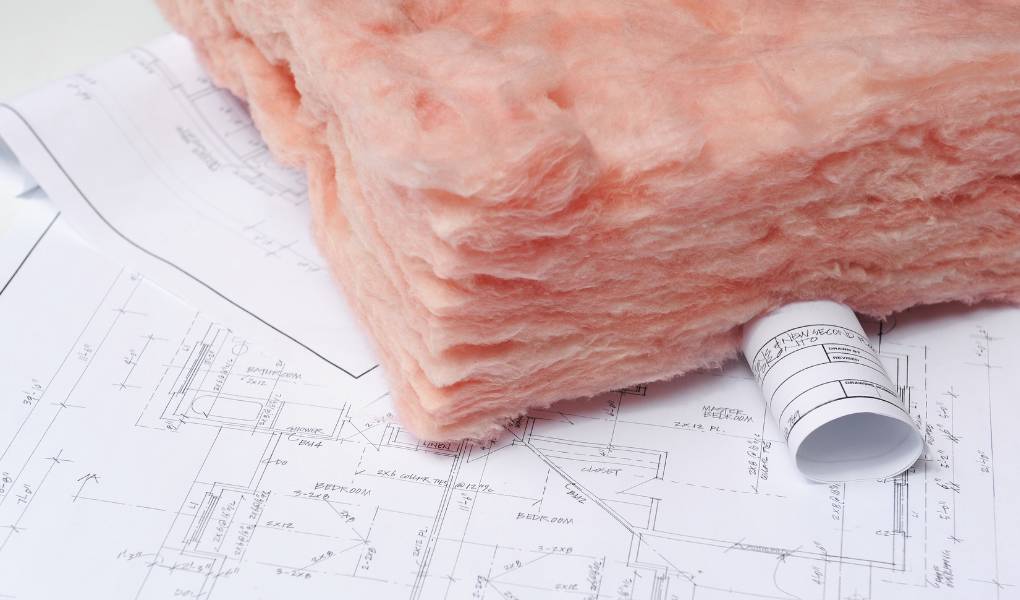
Radiant Barriers
Radiant barriers work by reflecting heat away from a building, reducing the amount of heat that is transferred into the living space. They are commonly used in hot climates, particularly in attics, unfinished walls, ceilings, floors, and attached garages.
The materials used in radiant barriers typically consist of a highly reflective surface, such as aluminum foil, which is often reinforced with kraft paper, plastic film, or polyethylene bubbles. These materials have high reflective properties, which allow them to effectively repel the sun’s radiant heat. Radiant barriers are also DIY-friendly, making it easy for homeowners to install them themselves.
The benefits of using radiant barriers are numerous. They can significantly reduce the amount of heat that enters a home, keeping it cool and comfortable in the summer months. Additionally, by reducing the amount of heat that penetrates a building, radiant barriers can help to lower energy costs associated with cooling. Overall, radiant barriers are a cost-effective and efficient way to keep homes cool and comfortable in hot climates.
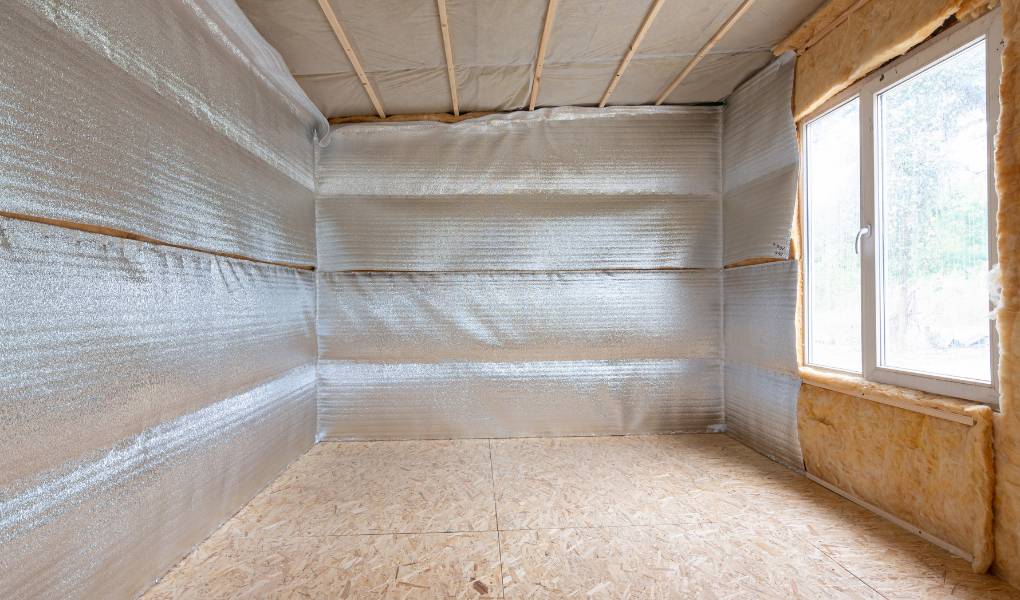
Vapor Barrier Installation
To install a vapor barrier in your home, the first step is to choose the right material. Common options include plastic sheeting, foil-faced insulation, and reflective barriers. Each material has its advantages, such as durability, moisture resistance, and reflective properties.
Before installation, measure the area needing coverage and cut the barrier to size using a utility knife or scissors. It’s important to leave some overlap at the seams to ensure a tight seal. When sealing the barrier, use a heavy-duty tape or sealant to secure the edges and seams. This will prevent any moisture from penetrating through.
Consider the climate and specific areas of your home when choosing and installing a vapor barrier. For example, in colder climates, a vapor barrier is typically installed on the warm side of insulation to prevent moisture from condensing. In areas prone to high humidity, such as basements or crawl spaces, a vapor barrier is essential to prevent moisture buildup.
By following these best practices and considering the climate and specific areas of your home, you can effectively install a vapor barrier to protect your home from moisture and potential damage. Check Our Vapor Barrier Service.
Mineral Wool Insulation
Mineral wool insulation is available in two types: rock wool and slag wool. Rock wool is made from volcanic rock, which is melted and spun into fibers. Slag wool is made from the waste product of steel manufacturing, called slag, which is also melted and spun into fibers. Both types of mineral wool have excellent fire resistance due to their high melting point.
On average, mineral wool insulation contains around 75% recycled content, making it an eco-friendly option. It is available in various forms including loose-fill, rolls, and batts, providing flexibility for different insulation needs.
The primary advantages of mineral wool insulation are its superior fire resistance, excellent sound absorption properties, and high thermal performance. However, drawbacks include its higher cost compared to other insulation materials such as fiberglass and its heavier weight, which can make installation more challenging.
In summary, mineral wool insulation, including rock wool and slag wool, offers excellent fire resistance and high recycled content. While it has some advantages in terms of performance, it may not be the most cost-effective option for all projects.
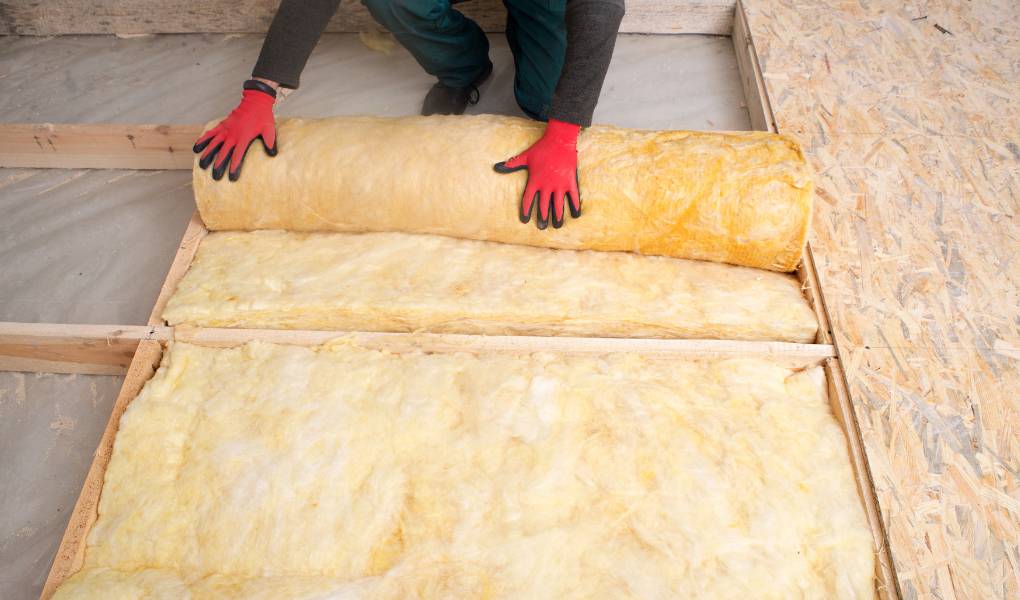
Loose-Fill Insulation
Loose-fill insulation comes in three main types: cellulose, fiberglass, and mineral wool. Cellulose is made from recycled paper products and is typically blown into walls and attics. Fiberglass, made from glass fibers, is also blown into walls and attics but can also be used in floors. Mineral wool, made from molten rock or slag, is commonly used in walls and attics for its fire resistance.
Advantages of loose-fill insulation include its versatility to fit into hard-to-reach spaces and its ability to reduce air leakage. However, it can settle over time, leading to reduced effectiveness, and can be influenced by moisture and pests. Cost factors to consider include the initial material and installation costs.
The installation process for loose-fill insulation typically involves the use of special equipment, such as a blowing machine, to distribute the insulation evenly. DIY installation is possible with the proper equipment, but professional installation ensures the insulation is properly installed to maximize its effectiveness and lifespan. Overall, loose-fill insulation is a popular choice for its ability to fill tight spaces and provide adequate insulation.

Cellulose Insulation
Cellulose insulation is made from recycled paper, which is shredded and then fiberized to create a fluffy material. The shredded paper is treated with fire-resistant and insect-resistant materials, such as boric acid, to enhance its performance. This process creates a sustainable and environmentally friendly insulation material that is suitable for both new construction and retrofit applications.
The advantages of cellulose insulation include its high R-value, which measures its resistance to heat flow. It also has good sound-dampening properties and is a cost-effective option for insulating homes. However, cellulose insulation has the potential for settling over time, which may reduce its effectiveness, and it can also absorb moisture if not properly installed.
In addition to cellulose insulation, other natural fibers can also be used for insulation. These include cotton, sheep’s wool, straw, and hemp. These materials offer similar benefits to cellulose insulation, such as being sustainable and offering good thermal performance. However, their availability and cost may vary depending on location and demand.
In conclusion, cellulose insulation made from recycled paper offers a sustainable and effective option for insulating homes, with the added benefits of fire and insect resistance. However, it is important to consider its potential for settling and moisture absorption when choosing an insulation material. Other natural fibers can also be considered for insulation, providing alternative options for environmentally conscious consumers.

Batt and Blanket Insulation
Batt insulation and blanket insulation are both types of thermal insulation used in buildings to reduce heat transfer. The main difference between the two lies in their form and application.
Batt insulation comes in pre-cut panels made from various materials such as fiberglass, mineral wool, and cotton. It is commonly used in wall, ceiling, and floor applications. Batt insulation is easy to install and can be cut to fit specific spaces. However, it may require multiple layers to achieve a desired R-value, and there is a potential for compression if not installed properly.
Blanket insulation, on the other hand, comes in a roll and is made from similar materials as batt insulation. It is typically used in attics and crawl spaces and is installed by unrolling the blanket onto the desired area. Blanket insulation is better suited for large, open spaces, but it can be more difficult to install in confined or irregularly shaped areas.
When comparing R-values of batt insulation, it’s important to note that different materials and thicknesses will result in different R-values. Fiberglass batt insulation may have an R-value ranging from R-13 to R-38, while mineral wool may range from R-15 to R-30.
In conclusion, both batt and blanket insulation serve the same purpose of thermal insulation, but their form and applications differ. The choice between the two depends on the specific needs of the building and the available space for installation.
In most of our insulation projects, we use batt insulation.
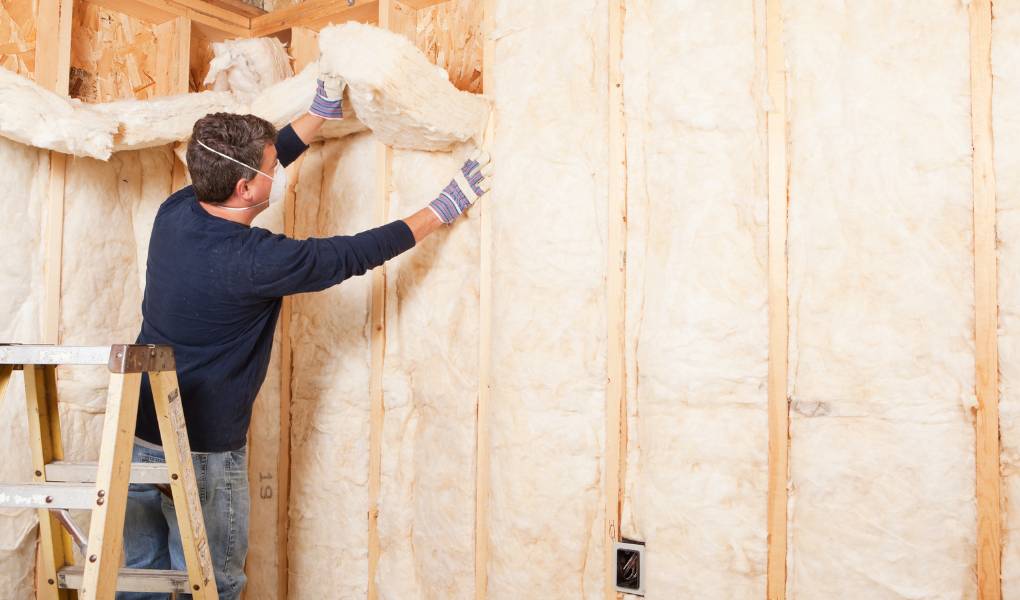
Blown-In Insulations
Blown-in insulation is a great option for adding insulation to areas that are difficult to reach or have irregular shapes, such as attics, finished walls, and new construction homes. There are two main types of blown-in insulation: fiberglass and cellulose.
Fiberglass blown-in insulation is made of tiny glass fibers and has an R-value of 2.2 to 2.7 per inch. It is often used in attics and wall cavities and can be DIY-friendly for those who are comfortable with using a blowing machine. Cellulose blown-in insulation, made of recycled paper or cardboard, has an R-value of 3.2 to 3.8 per inch and is also commonly used in attics and walls. While it can also be DIY-friendly, it is recommended to have professionals install it to ensure even distribution and proper coverage.
The benefits of blown-in insulation include its ability to fill in small gaps and crevices, providing effective coverage in hard-to-reach places. It also helps reduce energy costs and improve indoor comfort. However, it is important to consider factors such as moisture resistance and settling over time when choosing blown-in insulation for different areas of the home. Overall, blown-in insulation offers a versatile and effective solution for improving the energy efficiency of homes.

Benefits of Exterior Wall Insulations
Exterior wall insulation provides numerous benefits for residential and commercial buildings. By adding an extra layer of insulation to the outside of the building, it helps improve energy efficiency, reduce heating and cooling costs, and create a more comfortable interior environment. Additionally, exterior wall insulation can also improve the building’s durability and protect against moisture damage, ultimately leading to a longer lifespan for the structure. This type of insulation can also enhance the aesthetics of the building by providing a smooth and even appearance. Overall, the benefits of exterior wall insulation make it a worthwhile investment for property owners looking to enhance their building’s energy efficiency, comfort, and longevity.
Energy Efficiency and Bills Reduction
Insulation plays a crucial role in maintaining energy efficiency within a home or building. Choosing the right insulation material and installation techniques can significantly reduce energy bills by minimizing the transfer of heat through walls, ceilings, and floors. The higher the insulation’s R-value, the greater its thermal resistance, which helps maintain a consistent indoor temperature and reduces the need for heating or cooling. Proper air sealing, in combination with insulation, further enhances energy efficiency by preventing air leakage and drafts.
When selecting insulation, quality control is essential to ensure the product’s effectiveness and longevity. Insulation materials also impact the acoustic performance of a space and can contribute to a healthier indoor environment by reducing noise pollution and preventing the growth of mold and mildew. By considering these factors and choosing insulation that meets energy efficiency standards, homeowners and building managers can achieve substantial cost savings and create a more comfortable and sustainable living or working environment.
Heat Loss Prevention
Heat loss can be effectively prevented by using thermal insulation in walls and ceilings, particularly in the outside walls of a home where heat is most likely to be gained or lost. Thermal insulation works by reducing the transfer of heat through the walls and ceilings, keeping the indoor space warmer in the winter and cooler in the summer. The effectiveness of thermal insulation is measured by R values, with higher R values providing better thermal insulation.
In addition to traditional thermal insulation, reflective membranes can also be incorporated into a building system to add to the total R value. These membranes reflect radiant heat and can further reduce heat transfer, making the insulation even more efficient in preventing heat loss.
By using thermal insulation with high R values and incorporating reflective membranes into the building system, heat loss through walls and ceilings can be significantly reduced, leading to a more energy-efficient and comfortable indoor environment.
FAQ’S:
Is there a specific type of insulation that works best for a particular climate?
Different climates have different requirements when it comes to insulation. The best type of insulation for a particular climate depends on factors such as temperature range, humidity levels, and the presence of extreme weather conditions.
In colder climates, where winters are harsh and temperatures drop significantly, insulation materials with high R-values are preferred. These materials provide excellent thermal resistance and help keep the heat inside the building, reducing the need for excessive heating. Common insulation materials for colder climates include fiberglass, cellulose, and spray foam insulation.
In warmer climates, where summers are hot and temperatures can rise to extreme levels, the focus is on preventing heat gain. Insulation materials with reflective properties, such as radiant barriers or reflective foils, are often used to reflect the sun’s radiant heat away from the building.
Are there any health or safety concerns related to insulation materials?
Health and safety concerns related to insulation materials are an important consideration when choosing the best insulation for a building. Some insulation materials may release harmful chemicals or particles into the air, which can be detrimental to indoor air quality and pose health risks to occupants. It is crucial to select insulation materials that are low in volatile organic compounds (VOCs) and do not contain hazardous substances such as formaldehyde.
What factors should be considered when choosing the best insulation for a home or building?
When choosing the best insulation for a home or building, several factors should be considered to ensure optimal performance and suitability. These factors include:
- Thermal resistance: The insulation’s ability to resist heat flow, measured by its R-value, is crucial in determining its effectiveness. Higher R-values indicate better thermal insulation.
- Climate: The local climate plays a significant role in determining the most suitable insulation material for a particular area. Consider the temperature range, humidity levels, and the presence of extreme weather conditions.
- Installation: Some insulation materials may require specific installation techniques or professional assistance. Consider the ease of installation and whether you have the necessary skills or resources to install the insulation properly.
- Environmental impact: Consider the environmental impact of the insulation material, such as its production process, recyclability, and potential for off-gassing harmful chemicals. Choose insulation materials that are environmentally friendly and sustainable.
- Cost: Consider the cost of the insulation material, including its initial purchase price and long-term energy savings. Compare different options to find a balance between affordability and performance.
- Durability: Insulation materials should be durable and resistant to moisture, pests, and decay. Consider the expected lifespan of the insulation material and whether it will require frequent maintenance or replacement.
How long does insulation typically last before needing to be replaced?
Insulation materials can vary in terms of their lifespan, with some lasting longer than others. The typical lifespan of insulation before needing replacement can range from 10 to 80 years, depending on factors such as the type of insulation, installation quality, and environmental conditions.
What are the key benefits of investing in high-quality insulation?
Investing in high-quality insulation offers a range of key benefits for homeowners and building owners alike. Firstly, high-quality insulation helps to improve energy efficiency by minimizing heat transfer between the interior and exterior of a building. By reducing heat loss in colder climates or heat gain in warmer climates, it decreases the need for excessive heating or cooling, leading to significant cost savings on energy bills.
Need an advice? contact us today for a free estimate.



